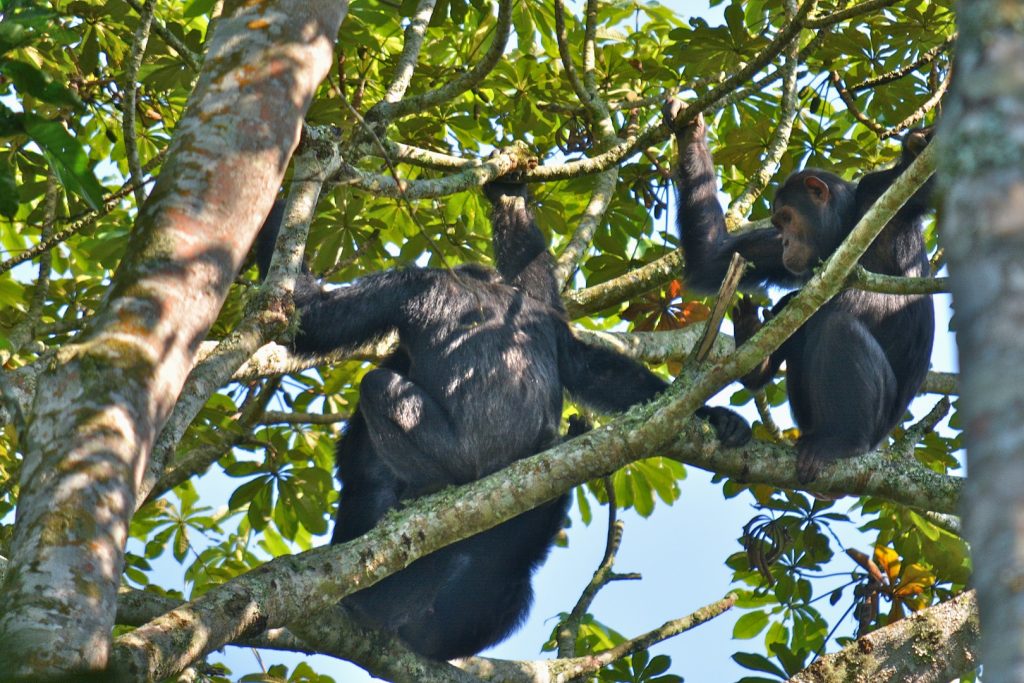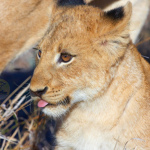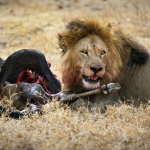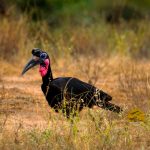Kyambura Game Reserve in Queen Elizabeth National Park: A Concealed Treasure.
The Kyambura Game Reserve is situated within Queen Elizabeth National Park in Uganda and is, indeed, a very beautiful destination due to the exceptional wildlife it possesses with rich biodiversity. The fully submerged gorge of Kyambura often referred to as the “Valley of Apes,” further adds to this reserve’s beauty. This gorge offers a visitor a chance to explore one of Africa’s most interesting landscapes-a mixture of chimpanzee tracking with great scenery. To the wildlife enthusiast, the nature lover, or the adventure seeker, Kyambura Game Reserve has something that offers an unforgettable experience, exposing one to the very best of Uganda’s natural heritage.
Location and Geography of Kyambura.
Kyambura Game Reserve is located in the northeastern corner of one of Uganda’s most visited safari areas, Queen Elizabeth National Park. It measures about 156 square kilometers in area, hosting the prominent Kyambura Gorge. The length of this gorge is about 100 meters deep and approximately about 11 kilometers in length. Commonly referred to as the “underground rainforest,” the gorge essentially comprises tropical forest sandwiched between open savannah and the mountain ranges of Rwenzori. This gives a striking contrast, which forms a surreal experience, making it an ecological marvel of a reserve.
The Kyambura River winds its way through the gorge and is a life-giving stream course to a host of wildlife that inhabits this oasis amidst a barren region of grasslands. This forested valley is in isolation and has protected several species of animals and plants dependent on this ecosystem for existence.
What Wildlife is in Kyambura Game Reserve.
The prime highlight of any visit to Kyambura Game Reserve is chimpanzee tracking. It boasts one of the few habituated chimpanzee groups in Uganda, meaning it’s familiar with the presence of human beings; hence, visitors are able to see them with ease in the wild. Chimpanzee trekking offers an exciting experience, which provides an extremely rare chance to see these intelligent primates playing up in the trees or foraging for food while communicating with their vocalizations.
Not excluding chimps, Kyambura Gorge is a dwelling place for many other wild life species. Species commonly sighted along the forest canopy include colobus monkeys, red-tailed monkeys, olive baboons, and vervet monkeys. The forest houses so many bird species that include, among others, African finfoots, martial eagles, and black-and-white casqued hornbills, thus making it a haven for bird-watchers.
Although the gorge itself is famous for its primates, the surrounding savannah of Queen Elizabeth National Park teems with larger game such as elephants, lions, buffaloes, and antelopes. In this regard, Kyambura Game Reserve is well-positioned to allow visitors to combine primate trekking with more conventional game drives in the much larger national park—creating a comprehensive safari experience.
Chimpanzee Trekking in Kyambura Gorge.
Chimpanzee tracking is the main highlight of Kyambura, interesting both wildlife and researchers alike. Guided treks by experienced guides will take one on dense forest trails in search of these light-hearted primates. Whereas chimpanzee sightings cannot be guaranteed-it is wild, after all-the experience of trekking through the gorge’s lush rainforest, with the sound of birdsong and the rustle of leaves, is an adventure unto itself.
Hikers should be prepared for an exciting walk-the steep walls and thick vegetation of the gorge may make the terrain slightly challenging. The reward for hiking this hill, however, is finding these chimpanzees in the wild, observing behaviors, interaction, and intelligence that make the trek really worth the effort. This intimate encounter gives insight into nature and ways of getting familiar with our closest animal relatives.
Unique flora and Ecosystem at Kyambura
Conservation Efforts at Kyambura Game Reserve.
Also, due to the proximity to farming lands, Kyambura Game Reserve faces serious conservation threats in terms of deforestation and poaching. Nonetheless, in the last couple of years, some serious conservation efforts have come into place for the protection of the rare Kyambura ecosystem in order to save the endangered population of chimpanzees that dwell within the reserve. The Uganda Wildlife Authority is keen to run this game reserve, in collaboration with other conservation agencies, for ecological tourism and creating awareness of preserving the biodiversity of Kyambura.
Community-based conservation projects are also very important. For instance, the local people participate in environmentally friendly activities such as planting trees, monitoring wildlife, and guiding tourists. Revenue generated from tourism in Kyambura assists both the park’s conservation efforts and the local communities that live around it, hence a sustainable model for the protection of wildlife.
Tourist Activities in Kyambura Game Reserve.
Kyambura Game Reserve has an endless list of activities that make it a fascinating addition to any Uganda safari. These are some of the best things one could do in the reserve: tracking chimpanzees is the major highlight for this exhilarating activity in the habituated chimps in nature.
Nature Walks: Guided nature walks in the striking Kyambura Gorge-to explore its peculiar plants, birds, and other smaller denizens of the forest.
Bird Watching: Kyambura is a haven for birdwatchers, as it has recorded over 300 species of birds in its environs-a good number of which are rare and threatened.
Game Drives: Although the gorge is famous for its primates, the area surrounding Queen Elizabeth National Park offers excellent game drives where you can see elephants, buffaloes, lions, and many other animals.
Cultural experiences: The communities around Kyambura have cultural experiences whereby visitors learn about traditional customs, dances, and handicrafts, and see how people share a land with wildlife.
Scenic viewing: Besides the wildlife, Kyambura Gorge offers excellent scenic views, mainly at either sunrise or sunset, as this is the time when special light creates magic for photography.
Best Time to Visit Kyambura Game Reserve.
The best time to see Kyambura Game Reserve is during the dry seasons from June to September and December to February. These are the times of the year when the trails are less muddy and the chances of viewing the wild and chimps are very high. You can visit the reserve throughout the year, as each season has its own charm.
Where to Stay in Kyambura Game Reserve.
Accommodation facilities in Queen Elizabeth National Park and outside the park are well equipped to serve visitors to Kyambura Game Reserve. From luxurious lodges offering panoramic views of the gorge to budget-friendly campsites, guests can choose the one that best suits their taste. Guided chimpanzee trekking tours, nature walks, and game drives are readily available at many lodges for seamless experiences among guests.
Conclusion on Kyambura Game Reserve.
Kyambura Game Reserve is an overlooked paradise that gives an undisputed coexistence of adventure, wildlife, and nature at large. From the trekking of the chimpanzee in the flooded Kyambura Gorge to the exploration of the sweeping savannah full of iconic African wildlife, this reserve provides an inevitable excuse for one traveling to Queen Elizabeth National Park. It is this biodiversity, conservation, and varied landscape cloaked with charm that make it special, a place where nobody departs without lasting impressions.












